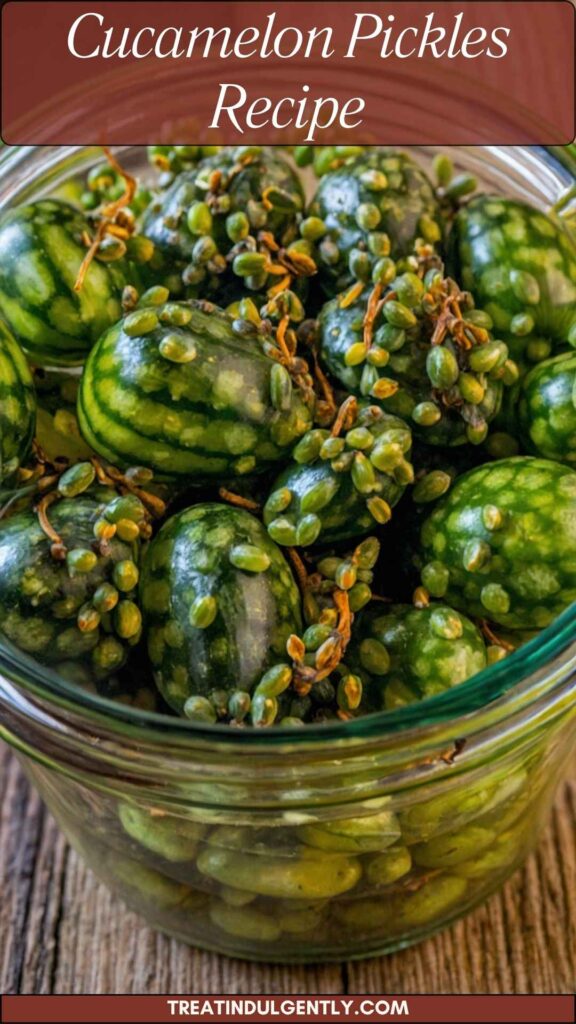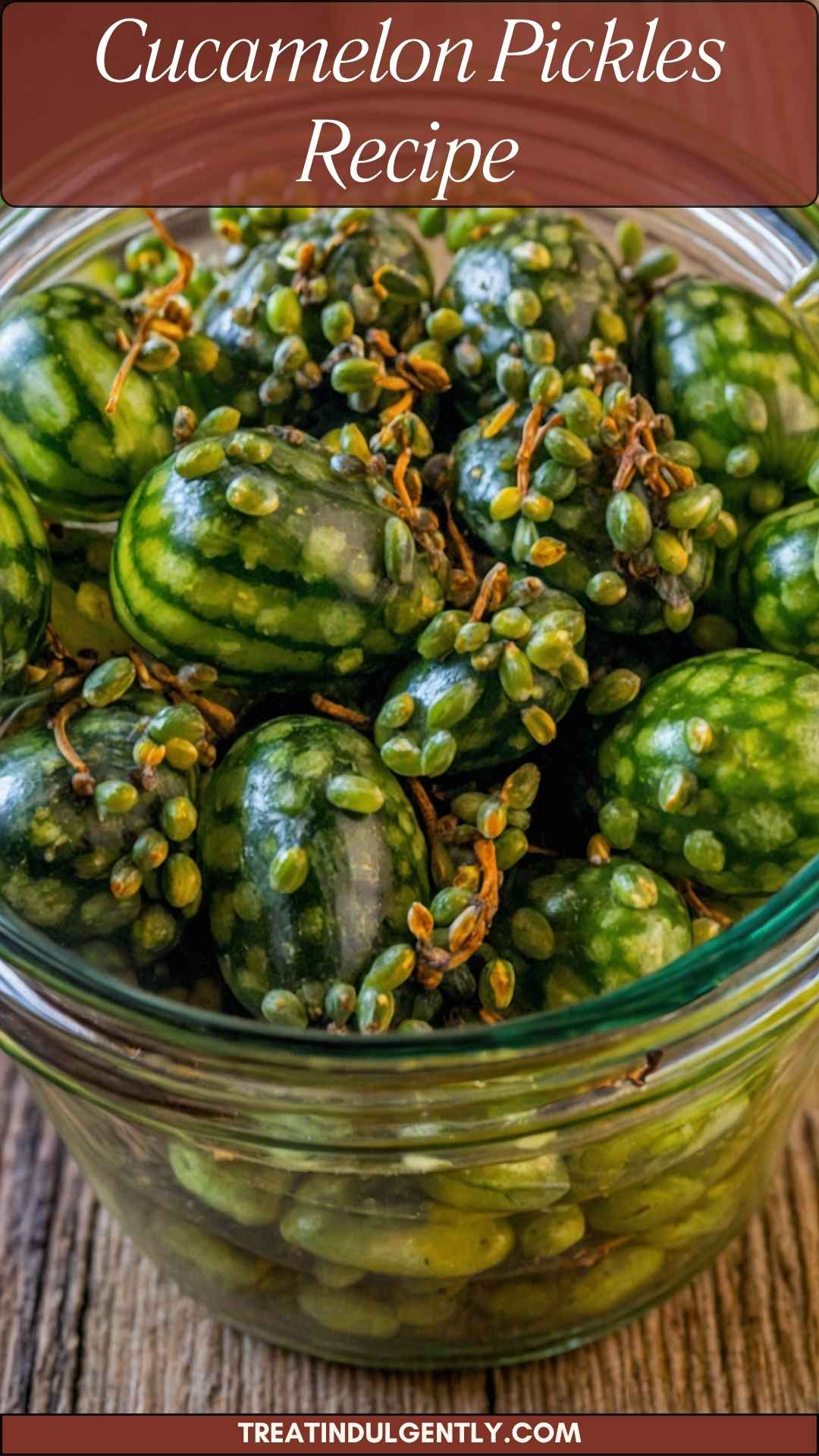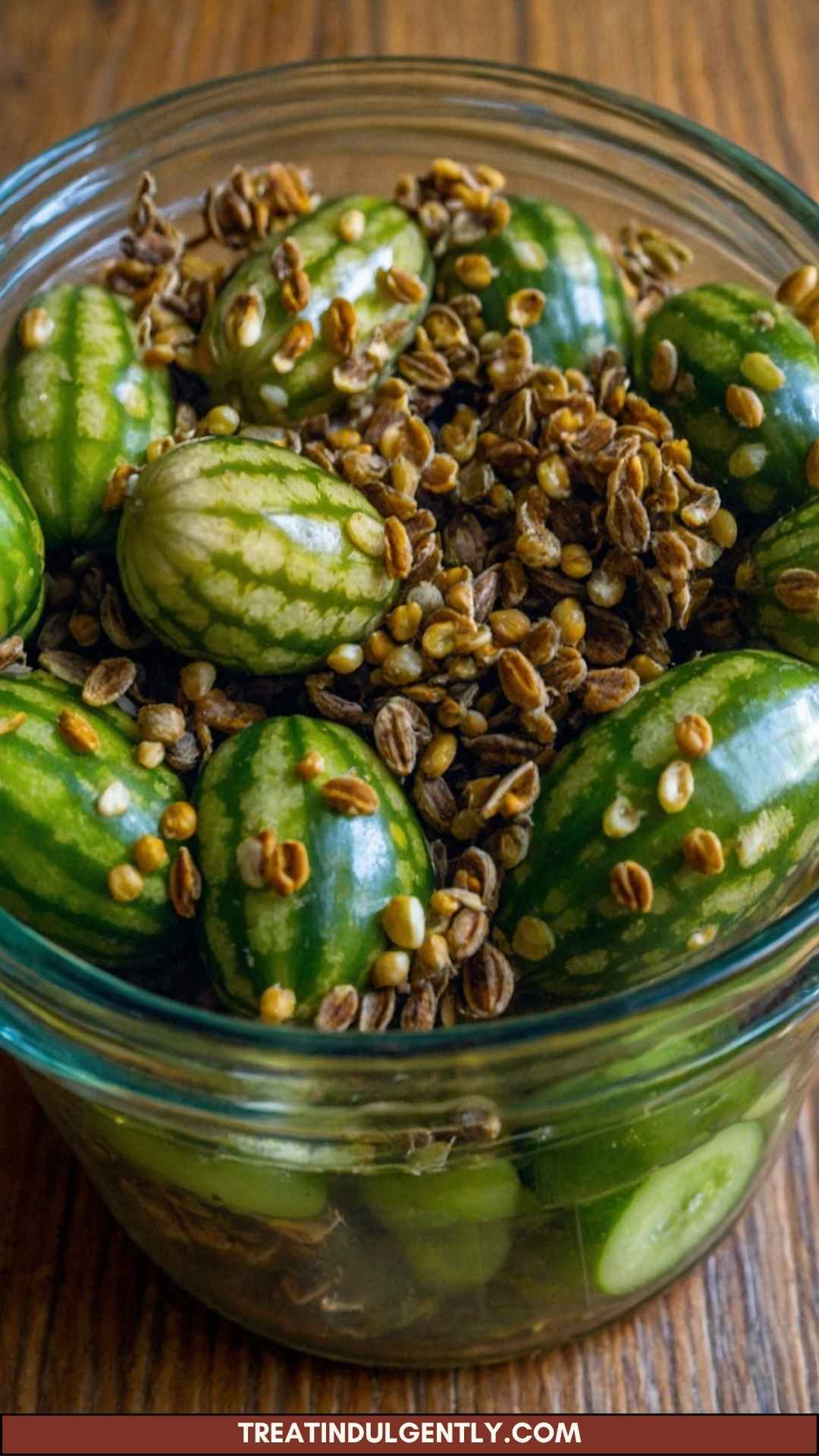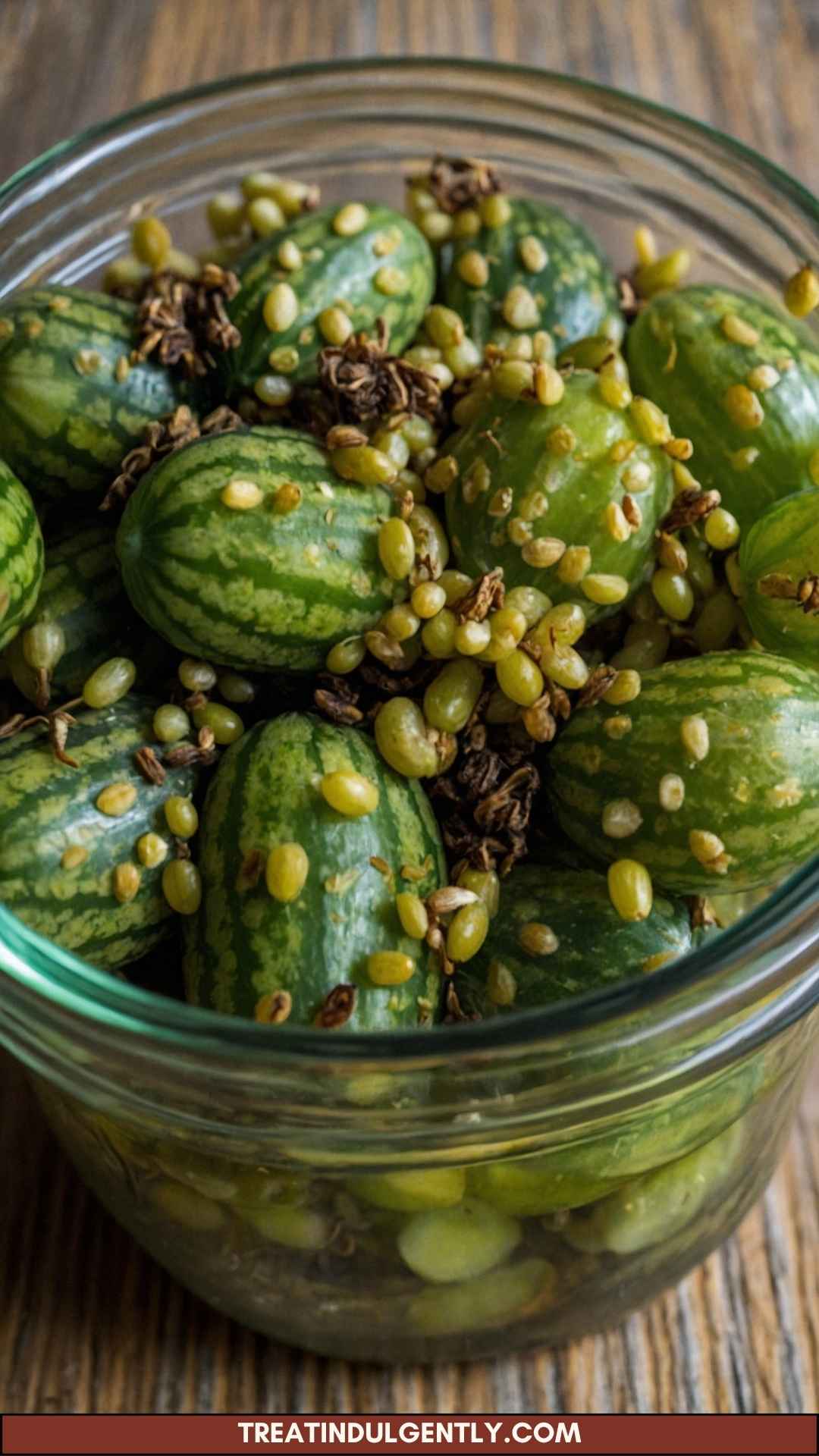Before diving into the world of cucamelon pickles, let’s consider what pairs well with them. These delightful little treats can elevate your culinary experience, whether at a summer picnic or a cozy family dinner. Here are a few pairing suggestions to get your taste buds excited:
1. Cheese Platter: Serve cucamelon pickles alongside a selection of cheeses like aged cheddar, creamy brie, or tangy goat cheese. The contrast of flavors will shine.
2. Charcuterie Board: Adding cucamelon pickles to your charcuterie enhances the board. Their crunch balances the richness of meats like prosciutto or salami.
3. Tacos: These pickles can add a zesty crunch to fish or veggie tacos. Their flavor profile complements the spices brilliantly.
4. Salads: Toss cucamelon pickles into a green salad for an unexpected twist. They can also shine in grain bowls, enhancing the overall texture and taste.
5. Sandwiches: Use them as a garnish on sandwiches and wraps. Their bite can elevate even the simplest sandwich.
Now, let’s plunge into the juicy world of cucamelon pickles!
What Are Cucamelon Pickles?
Cucamelon pickles are a unique take on traditional pickling. The cucamelon, scientifically known as Melothria scabra, is a fruit native to Central America. Its petite size, roughly the size of a grape, makes it an eye-catching addition to any dish. When pickled, these tiny fruits transform into crunchy, tangy delights that can enliven various dishes or stand alone as a snack.
Unlike cucumbers, cucamelons offer a bit more acidity and a slight sweetness. When you bite into one, it’s as though nature packed the essence of summer into a tiny package. They’re often used to pique interest in salads, as garnishes for cocktails, or simply enjoyed straight from the jar.
How Does It Taste Like?
You might wonder, "What do cucamelon pickles taste like?" Imagine biting into a cucumber with a hint of citrus. They have a refreshing crunch coupled with a tartness that isn’t overpowering. The pickling process enhances their natural flavors while infusing them with spices, making each bite an exciting moment.
The vinegar tang, combined with herbs and spices, brings out the fruitiness of the cucamelon. If you enjoy conventional pickles, you’ll likely appreciate the innovative twist cucamelon pickles offer.
Why You'll Love This?
Here’s the kicker: cucamelon pickles are not just a novelty; they're versatile. They can be incorporated into a variety of dishes, making them a practical choice for anyone looking to switch up their culinary game. Beyond their intriguing flavor, their vibrant appearance instantly brightens any plate. They’re perfect for gatherings or for simply relishing at home.
Plus, they are easy to make! If I can do it, so can you. The process is straightforward, and soon you’ll have a delicious snack waiting in your fridge.
Ingredients
To embark on this pickling journey, let’s gather the essentials. Here’s what you’ll need:
- 1 tablespoon dill seeds
- ¾ cup raw apple cider vinegar (plus extra if needed to fully submerge)
- 2 smashed garlic cloves
- 1 tablespoon coarse kosher salt
- 2 ½ cups fresh cucamelons, rinsed and dried
- 2 teaspoons cracked black peppercorns
- 2 sprigs of fresh dill weed
- ½ teaspoon coriander seeds
- 2 medium green chili peppers, split and deseeded
- 1 tablespoon whole yellow mustard seeds
- ¾ cup filtered water
Step-by-Step Directions
Let’s break down the process into manageable steps.
Step 1: Prepare the Cucamelons
Firstly, rinse your cucamelons under cold water. Gently dry them with a clean kitchen towel or paper towel. Set them aside to allow the excess water to evaporate.
Step 2: Create the Brine
In a medium saucepan, combine the apple cider vinegar, filtered water, salt, and crushed garlic. Bring this mixture to a gentle simmer over medium heat. Once it begins to bubble, you’ll notice the garlic aroma filling your kitchen. That, my friend, is a good sign!
Step 3: Add Your Spices
After the brine simmers, add the dill seeds, black peppercorns, coriander seeds, mustard seeds, and the split chili peppers. Stir gently to combine, ensuring the spices are evenly distributed. Continue to simmer for about five more minutes. This allows the spices to release their flavors and aroma.
Step 4: Pack the Jars
While the brine simmers, prepare your jars. Use clean, sterilized jars to ensure your pickles stay fresh. Pack the rinsed and dried cucamelons into the jars, leaving some space at the top.
Step 5: Pour the Brine
Carefully pour the hot brine into the jars over the cucamelons, ensuring they are fully submerged. If there’s not enough brine to cover them, you can add a little extra vinegar or water to make sure everything is immersed.
Step 6: Seal the Jars
Once you’ve poured in the brine, seal the jars with their lids. You’ll want to let them cool to room temperature before transferring them to the fridge.
Step 7: Pickling and Storage
After sealing, let the cucamelons pickle for at least 24 hours in the refrigerator—although a week will significantly deepen the flavor. The longer they sit, the better they taste!
Tips for Making Cucamelon Pickles
Choose Fresh Cucamelons: Select firm, unblemished cucamelons. Freshness impacts the crunch and flavor of your pickles.
Experiment with Flavors: Feel free to play with spices. Adding red pepper flakes for a kick or changing the herbs can yield intriguing variations.
Sterilize Your Jars: Always sterilize your jars beforehand. This helps preserve the pickles longer and avoids contamination.
Keep It Cool: Store your pickles in the coldest part of your refrigerator. They will remain crisp and flavorful longer this way.
The Longer, the Better: Give your pickles time. The flavors meld beautifully, and the pickles become a delightful explosion of taste on your palate.
How Do You Store Cucamelon Pickles?
Store these pickles in the refrigerator. If properly sealed, they’ll last for up to three months. Just remember, once you open a jar, they should be consumed within a few weeks for the best flavor and crunch.
What Other Substitutes Can You Use in Cucamelon Pickles?
Here are some great substitutes to consider if you can’t find cucamelons in your local store:
Mini Cucumbers: These can mimic the size and texture of cucamelons but will yield a different flavor.
Zucchini: Small zucchinis can work too. Slice them into smaller pieces for a crunchy alternative.
Green Grapes: They offer a different sweetness, but their texture can provide a unique experience.
Cherry Tomatoes: These can absorb the brine well and provide a burst of juiciness.
Radishes: They’re crunchy and spicy, adding a peppery flavor to your pickles.
Conclusion
Cucamelon pickles are a delightful way to add excitement to your meals and snacks. They’re easy to make and open a world of culinary possibilities. The unique blend of tartness and crunch can leave you—and your guests—wanting more.
So, roll up your sleeves, gather those ingredients, and discover the magic of cucamelon pickles! You might just find a new favorite that brings a little zest to your culinary life. Enjoy the process, and feel free to share your tips or experiences in the kitchen! Happy pickling!
You’ll also like the following recipes!





